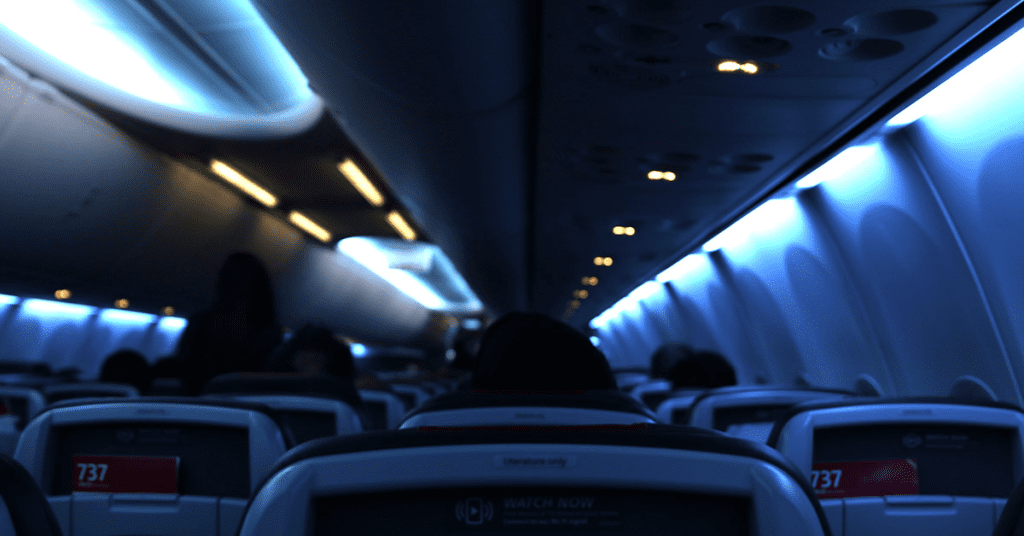If you’ve ever flown on a plane, you’ve likely noticed that the cabin lights dim during takeoff and landing. You might assume this is done to help passengers settle in and rest. But that’s far from the truth. Dimming the cabin lights is actually a vital safety measure, designed to prepare passengers for the worst-case scenario—an emergency evacuation. Let’s dive deeper into why this practice is so crucial and what it means for your safety.
Safety First: Helping Your Eyes Adjust to Darkness

The main reason airlines dim the cabin lights during takeoff and landing is to help your eyes adjust to the darkness. You may not realize it, but it can take your eyes up to 10 minutes to fully transition from bright light to dim light. In the event of an emergency, this adjustment time is precious.
Imagine the chaos if the plane needed to be evacuated and the lights were suddenly cut. Without prior adjustment to the darkness, passengers might struggle to locate exits or follow emergency lighting. By dimming the lights gradually, airline crews ensure that if something goes wrong, your eyes are already adjusted, making it easier to see the illuminated emergency signs and floor lighting. This small act can make a huge difference in the critical moments of an emergency.
Critical Phases of Flight: Why Takeoff and Landing Matter Most
Takeoff and landing are known as the most dangerous phases of a flight. Statistically, these are the times when accidents are most likely to occur. According to aviation reports, about 21% of fatal incidents happen during takeoff, while a staggering 46% occur during final descent and landing.
During these moments, the airplane is in a “dirty configuration,” which means its landing gear and wing flaps are deployed, making it more vulnerable to mechanical issues or environmental hazards. Pilots are hyper-focused on their surroundings, monitoring systems, and communicating with air traffic control. With so much at stake, the crew has to prepare for any eventuality, including the need for an emergency evacuation. Dimming the lights is one of many precautions taken to ensure everyone on board is ready for anything.
Emergency Preparedness: Navigating the Cabin in Low Light
Imagine this: the plane is making an emergency landing. You need to evacuate quickly, but the cabin is suddenly plunged into darkness. Panic ensues, and finding the exits becomes a daunting task. This is exactly why dimming the cabin lights before landing is so important.
By lowering the light levels beforehand, your eyes have already adapted, and you’ll be able to spot the emergency exit signs glowing in the darkness. The floor lighting, designed to lead you to the nearest exit, becomes much easier to follow. It’s a simple but effective way to enhance passenger safety, giving you the best chance to get out of the aircraft safely if needed.
Other Safety Procedures You Might Not Notice
While dimming the lights is a crucial safety step, it’s not the only thing happening during takeoff and landing to ensure your safety. Ever notice how flight attendants ask you to stow away your tray table, secure your belongings, and return your seat to its upright position? These aren’t just polite requests—they are essential steps to keep the cabin clear in case of an emergency.

Another seemingly small but important request is to raise your window shade. This allows the crew to quickly assess outside conditions, such as fire or debris, that could impact an evacuation. These coordinated efforts are all about making the plane as safe as possible in the most critical moments of flight.
Conserving Energy and Enhancing Passenger Comfort
While safety is the top priority, dimming the cabin lights also has secondary benefits. On nighttime flights, reducing the light levels can help conserve energy and create a more peaceful environment. Once the plane has reached cruising altitude, dimmed lights encourage relaxation, and many passengers take advantage of this calm atmosphere to get some rest.
By promoting a restful environment, airlines help reduce passenger stress, which is particularly important during longer flights. However, it’s essential to remember that the lights are dimmed not just for your comfort but primarily for your safety.
Conclusion: The Real Reason Behind Dimming the Cabin Lights

The next time you’re on a flight and notice the cabin lights dimming, don’t assume it’s just to help you sleep. In reality, it’s part of a well-thought-out safety protocol designed to prepare you for an emergency evacuation. By allowing your eyes to adjust to lower light levels, the airline is ensuring you’ll be better equipped to navigate the cabin and find your way to safety if something goes wrong.
This seemingly small action, combined with other safety measures like stowing tray tables and raising window shades, plays a significant role in optimizing safety during takeoff and landing. So, next time the lights go down, you can rest easy knowing it’s all part of keeping you safe during the most critical moments of your flight.





